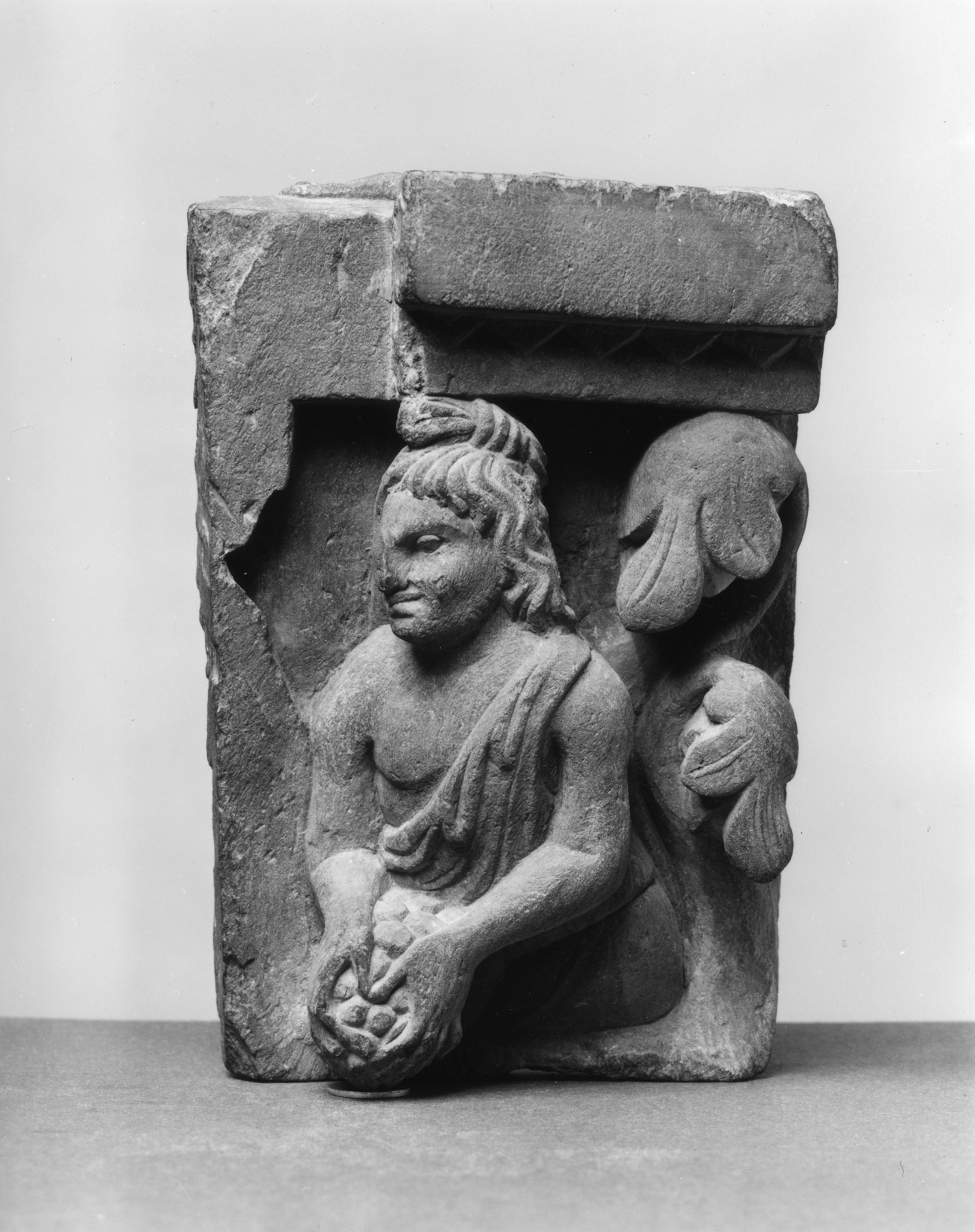Offering of a Handful of Dust (?)
In this fragment ,most likely of a narrative scene on a stuppa, a the upper half of a male figure gazing to his right is represented in draped fabric holds a handful of some substance. Two florets protrude behind the figure’s back; they presumably framed the larger scene this fragment was situated within. Above the figure’s head is an architectural overhang, its shallow depth marked with a triangular border is commonly seen in Gandharan sculptural architecture. The larger narrative scene can no longer be determined due to the loss on the left edge of the fragment. The iconography suggests this figure is most closely aligned with other Gandharan images of the offering of dust. The story of the offering of dust, seen in the Kapîsâvadâna (a Buddhist Hybrid Sanskrit narration) and many other texts, outlines the relative honor of an offering as it relates to the one who offers it. A child offers a handful of dust to the Buddha; the narration attests that this seemingly inadequate offering is in fact a valid one as it comes from a child who believes it to have value. The general moral of the story then implies that an offering need not be grand in scale but rather relative to the position of the one who offers it.
Provenance
Provenance (from the French provenir, 'to come from/forth') is the chronology of the ownership, custody, or location of a historical object. Learn more about provenance at the Walters.
Baroness Helen Giskra, Baltimore [date and mode of acquisition unknown]; Walters Art Museum, 1949, by gift.
Geographies
India (Place of Origin)
Measurements
H: 5 7/8 in. (14.9 cm)
Credit Line
Gift of the Baroness Helen Giskra, 1949
Location in Museum
Not on view
Accession Number
In libraries, galleries, museums, and archives, an accession number is a unique identifier assigned to each object in the collection.
In libraries, galleries, museums, and archives, an accession number is a unique identifier assigned to each object in the collection.
25.44


